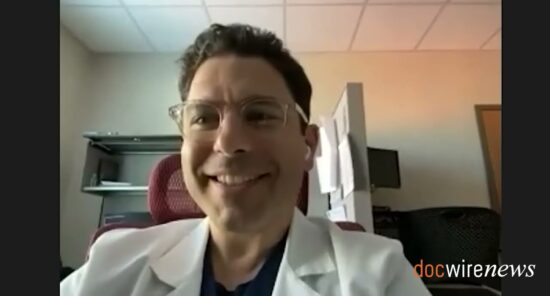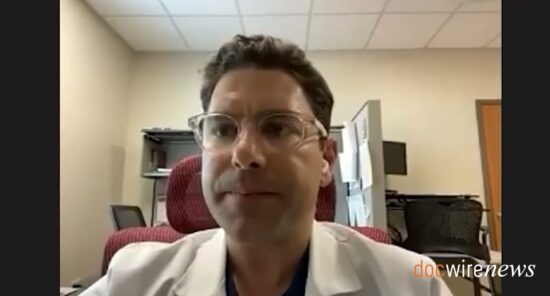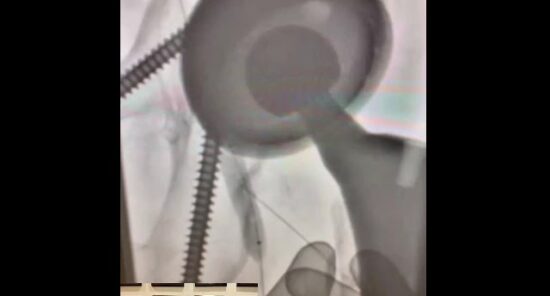Credit: Original article published here.In part two of an informative discussion, DocWire News partner Dr. Hady Lichaa continues his discussion with Dr. Matthew Bunte, a world-renowned expert on vascular and cardiac interventions. The topic at hand is deep venous arterialization (DVA), which is a technique that provides a limb-saving option for patients with chronic limb-threatening ischemia. In part one, Dr. Bunte broke down the technical nuances of the procedure. Here, Dr. Bunte details the clinical aspects of DVA procedures, recommendations he gives his patients post-DVA, what percentage of limbs are saved due to DVA, and much more. Dr. Hady Lichaa: So now, getting out of the technical aspect to the kind of program development aspect, tell us how you started. Who are the players in your program? And how do you collaborate? And how do you…? Let’s start with that. Dr. Matthew Bunte: Yeah. As a cardiologist, I have really come to appreciate how important it is to thinking about these patients almost like a transplant patient. I’m thinking about my heart failure colleagues and how there are many different clinical aspects to the case that lead you to offering these really complex solutions. But also, there’s that psychosocial dynamic,
Credit: Original article published here.Dr. Hady Lichaa: Hello, everyone. This is Hady Lichaa, Interventional Cardiovascular Specialist from DocWire News, and I have the pleasure of having Dr. Matthew Bunte with me today. He is a world expert on vascular interventions and cardiac interventions. Extremely accomplished, had the opportunity to start building a deep venous arterialization program within their limb salvage program, and we’re kind of wanting to discuss this with him today. How are you, Dr. Bunte? Dr. Matthew Bunte: I’m great, Hady. Thanks so much for having me today, and looking forward to the discussion. Dr. Hady Lichaa: Yes, sir. So, if you can let the audience know about what you do mostly, especially on the endovascular side, and then we can delve into the topic. Dr. Matthew Bunte: Yeah. Well, hello, everybody. I’m Matt Bunte. I’m from the Saint Luke’s Mid America Heart Institute in Kansas City, Missouri. I also am an associate professor at the University of Missouri Kansas City School of Medicine, and I’m the Director of Vascular Medicine for our health system. And my endovascular practice includes both artery and venous interventions, but more heavily focused on peripheral artery disease and chronic limb-threatening ischemia, which
Credit: Original article published here.In this episode of Practice Tips, Dr. Hady Lichaa outlines the balloon puncture access technique, which is applicable to any situation where the operator is facing difficulty accessing a diseased or sclerosed vessel. The access is facilitated by the inflation of a balloon at the desired access location. The balloon is delivered from an alternative access site which is either too small for the delivery of the rest of the gear or too distant from the treatment zone. Hady Lichaa, MD, FACC, FSCAI, FSVM, RPVI, is an assistant professor of medicine at the University of Tennessee College of Medicine, and an interventional cardiologist specializing in complex coronary interventions. Dr. Lichaa is a content partner for DocWire News and contributes interventional content several times per month to DocWire News. Watch previous installments of this series: Using Ultrasound to Gain Vascular Access Simplifying Coronary Bifurcation Ulnar Artery Access and Occlusion Management Overcoming Arteria Lusoria The Buddy Wire Paradox Perforated Balloon No Reflow Catheter Telescoping Technique to Overcome Vessel Tortuosity Alternative Arterial Access in CLI Reversing Patient Cranial Caudal Position Optimal CO2 Imaging The Coronary Live IVUS Technique Antegrade Superficial Femoral Artery Access and Closure IVUS Guided Re-Entry The Importance of Identifying the Inguinal Ligament
Credit: Original article published here.In this edition of Dr. Hady Lichaa’s Practice Tips series, Dr. Lichaa expands on a previous video by detailing the use of coronary angulated micro-catheters in dealing with complex coronary bifurcation wire crossing followed by the use of the reverse Culotte technique, with its steps outlined after the case. Hady Lichaa, MD, FACC, FSCAI, FSVM, RPVI, is an assistant professor of medicine at the University of Tennessee College of Medicine, and an interventional cardiologist specializing in complex coronary interventions. Dr. Lichaa is a content partner for DocWire News and contributes interventional content several times per month to DocWire News. Watch previous installments of this series: Using Ultrasound to Gain Vascular Access Simplifying Coronary Bifurcation Ulnar Artery Access and Occlusion Management Overcoming Arteria Lusoria The Buddy Wire Paradox Perforated Balloon No Reflow Catheter Telescoping Technique to Overcome Vessel Tortuosity Alternative Arterial Access in CLI Reversing Patient Cranial Caudal Position Optimal CO2 Imaging The Coronary Live IVUS Technique Antegrade Superficial Femoral Artery Access and Closure IVUS Guided Re-Entry The Importance of Identifying the Inguinal Ligament by Ultrasound How to Access the Right Pulmonary Artery for Endovascular Pulmonary Interventions The Live IVUS Stenting Technique





